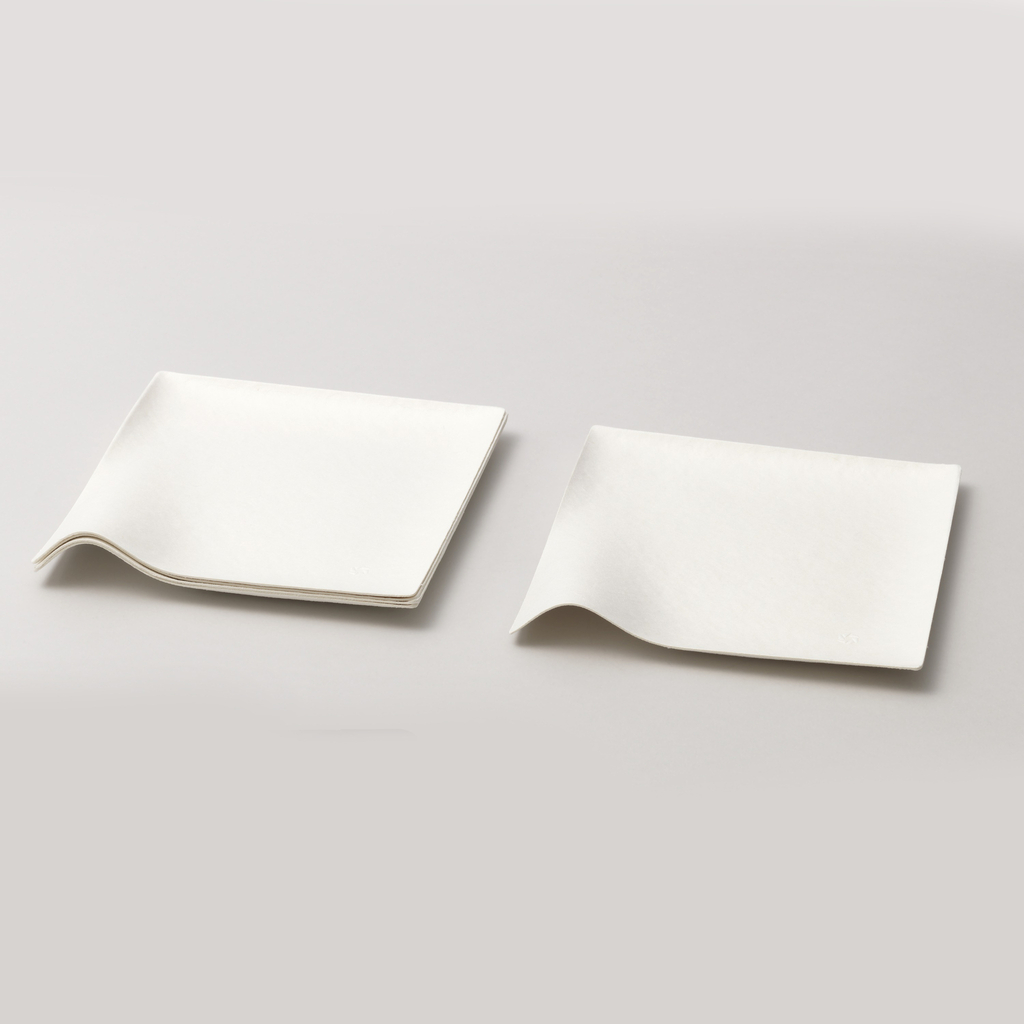This simple plate is part of a large collection of disposable tableware designed by Shinichiro Ogata and produced by Wasara in Japan, with sustainability in mind. Made from a pulp consisting of biodegradable and compostable reed, bamboo and bagasse (a byproduct of sugarcane processing), these delicate looking yet durable wares take myriad forms, which allow for the functionality and beauty of each piece. Many of the forms, whether a cup, bowl or plate, have features that do double duty—the simple pinch in the rim of a coffee cup is its handle, but can also serve as a pouring spout; the edge of a plate is contoured not only to enclose the contents, but to allow for easier carrying or holding at a picnic or party. Each form’s elegant minimalism is accentuated by the material’s neutral color and lightly textured matt surface, and reflects a return to simplicity and resourceful craftsmanship, essential elements of a traditional Japanese aesthetic. Each shape also centers attention on the presentation of food and the sensual experience of dining. Such design helps us to reframe the way we think about disposable tableware, and makes us more mindful of how we interact with a widely used product.
The Wasara Kaku Square Plate is included in the exhibition, Esperanza Spalding Selects, on view through January 7, 2018.
Cynthia Trope is Associate Curator of Product Design and Decorative Arts at Cooper Hewitt, Smithsonian Design Museum
